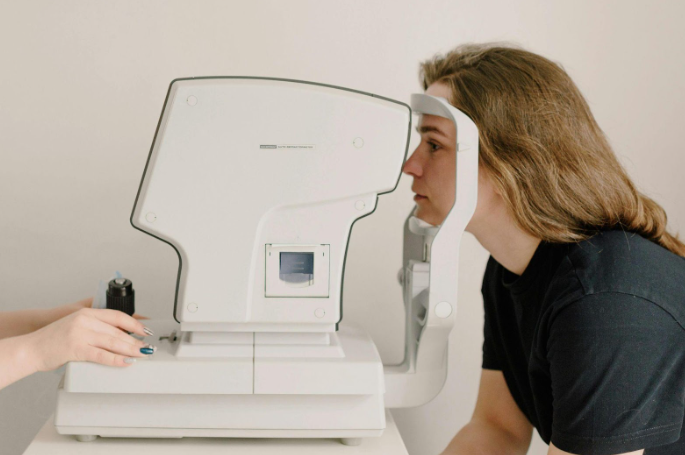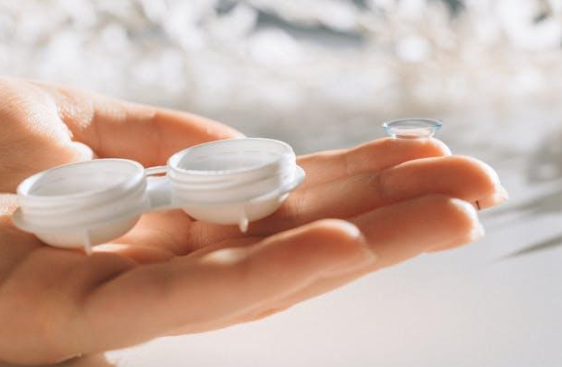Understanding and Preventing Photokeratitis
Understanding and Preventing Photokeratitis

Photokeratitis is a painful yet often temporary condition caused by overexposure to ultraviolet (UV) rays. Often compared to a sunburn—but on the eye—it occurs when UV radiation burns the cornea, which is the clear, dome-shaped surface that covers the front of the eye. While many people are familiar with the need to protect their skin from harmful UV rays, fewer are aware that the eyes are just as vulnerable.
This condition is sometimes called "snow blindness" when it occurs in snowy environments, or "welder’s flash" when caused by exposure to welding torches. Despite the varied causes, the underlying issue remains the same: the surface of the eye becomes inflamed and damaged from too much UV light.
The damage from photokeratitis can affect both eyes and is usually temporary, resolving on its own within a day or two. However, the symptoms can be severe and distressing, especially if not recognized or treated early.
Causes and Risk Factors
Some of the risk factors of photokeratitis are:
Natural and Environmental Exposure
The most common cause of photokeratitis is exposure to UVB and UVA rays from the sun, particularly in environments that intensify the reflection of sunlight. Snow, water, white sand, and even concrete can reflect UV rays, increasing their intensity and effect on the eyes. High altitudes are especially risky because the atmosphere is thinner and provides less natural UV filtration. This is why skiers and mountain climbers are among the groups most at risk.
Artificial Sources
Artificial UV sources can also cause photokeratitis. Tanning beds, sunlamps, and arc welding equipment emit intense UV radiation that, if proper eye protection is not used, can result in serious corneal damage. Welders often develop “welder’s flash,” which is essentially photokeratitis caused by the bright flashes emitted during their work.
Activities and Demographics at Risk
People who spend extended periods outdoors without proper eye protection are most susceptible. This includes skiers, beachgoers, surfers, hikers, and outdoor workers like construction workers and lifeguards. Individuals with lighter eye colors may also be more vulnerable, as their irises provide less natural protection against UV rays. Children and teens may be at higher risk because they spend more time outside and may not consistently use sunglasses or hats.
Recognizing the Symptoms
Photokeratitis symptoms typically appear several hours after exposure to the offending UV rays, which can make it difficult to immediately connect the symptoms to the cause.
Common Signs to Look Out For
Patients may experience a range of uncomfortable symptoms, including redness in the eyes, a gritty or sandy feeling, excessive tearing, and heightened sensitivity to light (photophobia). Blurred vision is also common, and many people find it difficult to keep their eyes open due to discomfort. In more severe cases, temporary vision loss or seeing halos around light sources may occur. The pain can feel intense, leading some to worry they have caused permanent damage, though this is rarely the case with proper care.
The Danger of Delayed Symptoms
Since symptoms can take up to 6–12 hours to develop, individuals may not realize they’ve sustained eye damage until well after the exposure has occurred. This delay highlights the importance of being proactive about eye protection rather than reacting after discomfort sets in.
Diagnosis and When to Seek Medical Help
If you suspect that you or someone you know has photokeratitis, it’s important not to ignore the symptoms or attempt self-treatment through actions like rubbing the eyes, which can worsen the condition.
Clinical Evaluation
An optometrist or ophthalmologist can diagnose photokeratitis through a slit-lamp examination, which allows them to closely inspect the surface of the eye. Sometimes, a fluorescein dye may be used to reveal damaged areas of the cornea under blue light. The pattern and extent of the damage help the eye care professional determine whether the condition is photokeratitis or a more serious issue.
When to Visit a Specialist
While many mild cases resolve with rest and care at home, medical attention should be sought if symptoms are severe, worsen after 24 hours, or if there is significant vision loss or discharge. These could be signs of infection or more serious damage requiring professional intervention.
Treatment and Recovery
Most cases of photokeratitis resolve within 24 to 48 hours. During this time, the focus should be on protecting the eyes from further exposure and managing discomfort.
Home Remedies
One of the first steps in managing photokeratitis is to stay in a dark or dimly lit environment to avoid triggering photophobia. Cold compresses can help reduce swelling and soothe irritated eyes. Preservative-free artificial tears can also provide relief from dryness and a gritty sensation.
It’s crucial to avoid wearing contact lenses until the eyes have fully healed. Contact lenses can trap irritants against the cornea and delay the healing process.
Professional Treatment
For more serious cases, an op may prescribe antibiotic eye drops to prevent infection or medicated drops to reduce inflammation and pain. In rare instances, an eye patch may be recommended to give the cornea time to heal without additional irritation from blinking.
With the proper precautions and treatment, most people recover quickly without long-term effects. However, repeated exposure to intense UV light over time can increase the risk of cataracts and other eye diseases.
Prevention Is the Best Strategy
Since photokeratitis is entirely preventable, the best “treatment” is effective and consistent prevention.
Choosing the Right Sunglasses
Not all sunglasses offer adequate protection. It’s essential to choose sunglasses that block 99% to 100% of both UVA and UVB rays. Look for wraparound styles that prevent UV rays from entering around the sides of the lenses. Polarized lenses can also reduce glare from reflective surfaces like water and snow, although they do not inherently block UV rays unless specifically treated.
Protective Gear for Specific Activities
If you're skiing, snowboarding, or mountaineering, choose goggles with UV protection. Even on cloudy days, UV rays can penetrate cloud cover, making eye protection a year-round necessity. Welders should always use helmets with appropriate filters that block UV radiation.
Everyday Habits
Wearing a wide-brimmed hat in sunny weather can cut UV exposure by up to 50%. Encouraging children and teens to wear sunglasses early can instill habits that protect their eyes over a lifetime. Don’t forget that UV rays reflect off water, sand, and even pavement, so eye protection is just as important during overcast beach days as it is on sunny mountain slopes.
Don’t Let UV Rays Catch You Off Guard
Photokeratitis may be temporary, but its effects are far from pleasant. With symptoms like searing pain, light sensitivity, and blurry vision, this condition can turn a fun day outdoors into a painful experience. The good news is that it’s almost entirely preventable with just a few precautions.
Investing in quality eye protection, being aware of your environment, and seeking medical advice when symptoms arise can safeguard your short-term comfort and long-term vision health.
If you’re frequently outdoors or use UV-emitting equipment,
contact us for a comprehensive eye exam with a trusted optometrist like us at
Baptist Eye Surgeons. Your eyes deserve the same care and protection as your skin—if not more.





